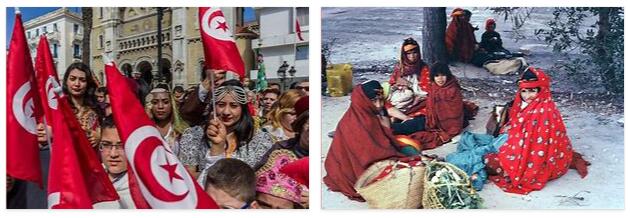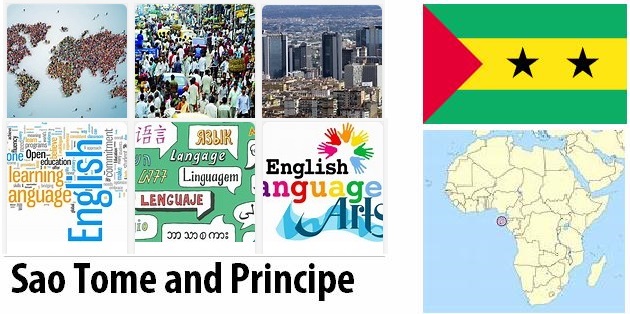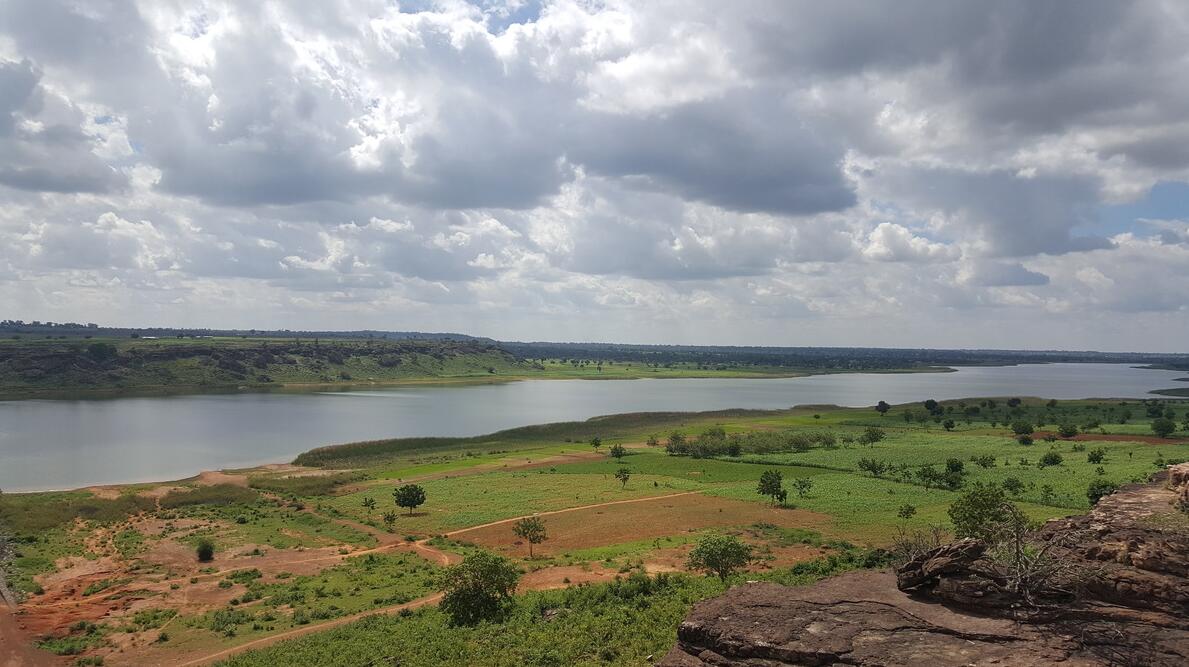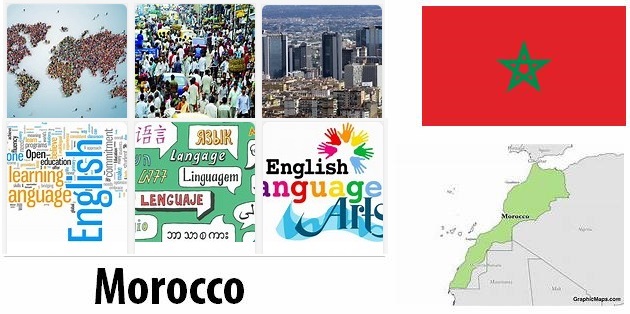Tunisia Economy and Culture
(Al-Jumhūrīyah-at-Tūnusīyah). State of North Africa (164,150 km²). Capital: Tunis. Administrative division: governorates (24). Population: 11,551,448 (2018 estimate). Language: Arabic (official), French. Religion: Muslims 99%, others 1%. Monetary unit: Tunisian dinar (1000 thousandths). Human Development Index: 0.735 (95th place). Borders: Mediterranean Sea (N and E), Libya (SE), Algeria (W). Member of: COMESA, EBRD, Arab League, OCI, UN, OAS observer, UA and WTO.
ECONOMY: TRADE, COMMUNICATIONS AND TOURISM
The tertiary sector is the most important sector of the economy and participates for almost 65.2% in the formation of the GDP. Although trade is lively, both domestic and foreign (especially the EU), the trade balance is in deficit (exports cover on average two thirds and even less than imports). Tunisia mainly exports clothing, electrical and electronic equipment, oil and derivatives, followed by olive oil, fruit and vegetables, etc., while imports are mostly represented by machinery and means of transport, fuel and petroleum products, iron and steel. etc. § A transit country between the Maghreb and the rest of North Africa, Tunisia has a good internal communications network that covers the entire territory. The railway network is based on the fundamental coastal axis Biserta (Bizerte) -Tunisi-Sfax, where trunks branch off to Gafsa, Tozeur and Gabès; to W it connects with the Algerian lines. Great importance, also due to the ever-continuous increase in tourism, is the road network, which mainly belongs to the coast road Bizerte (Bizerte) -Gabès, with extension with Libya; the network includes, among the main internal lines, the Kairouan-Kasserine route and the artery for the southern oases, it developed (in 2004) for 19,000 km, connecting all the main centers of the country. The maritime services make extensive use of the port of Tunis (with the outpost of the Goletta) and that of Gabès, Beserta (Bizerte), Susa (Sousse) and Sfax for the commercial movement; the port of La Skhirra is used for the export of oil. The country has seven international airports: Tunis / El-Aouina, Tunis / Carthage, Djerba, Monastir and Tozeur, Tabarka, Sfax. § The contributions of currency coming from the tourism sector by now very well established and which can count on equipment among the best on the African Mediterranean coast are significant; in 2017 Tunisia was visited by 7,052,000 foreigners, attracted by splendid beaches, archaeological remains of the Roman Empire and the intact environment of the oases.
CULTURE: GENERAL INFORMATION
As in other Islamic countries bordering the Mediterranean, in Tunisia the Islamic culture is dominant, albeit permeated by a relaxed and not oppressive stuation. In rural areas, daily life is dominated by the family, the mosque and the hammam, the public baths which are meeting places especially for men. Alongside the rural and rather modest reality of the villages, it contrasts with the town, certainly richer, more dynamic and more westernized. Among other things, Tunisia has become one of the most popular seaside tourist destinations, such as Jerba and Hammamet. On the mountains located further south there are still small groups of Berbers, the only ones to have resisted the numerous peoples of the past (Carthaginians, Romans, Arabs) who occupied these lands. Carthage (1979), now part of the greater Tunis, or Kerkuane (1985-1986), with its necropolis, or the medina of Tunis (1979) and Sousse (1988), the Roman amphitheater of El Jem (1979), the Roman ruins of Thugga (1997), and al-Qayarawan (1988). There are numerous events that take place throughout the year: on the occasion of the international festival of the Sahara, in Douz, dances and music typical of the nomadic peoples of the desert alternate with the race of dromedaries and other traditional activities. Events related to current events are the plastic arts festival in Mahres, created in 1988 by the painter Y. Rekik, and the international film festival in Carthage, which hosts films from the rest of Africa and the Middle East. The cuisine is based on the typical ingredients of Mediterranean Africa: couscous accompanies vegetables, legumes, chicken and lamb meat; fish and shellfish abound on the menus along the coast. Desserts, such as baklawa, made with honey and hazelnuts, have a strong sugary component. Typical products are olive oil and dates, whose deglet en-nour variety is particularly renowned. Tea, very strong and sweet, is the most typical drink; however, there is no lack of beer and various kinds of wines are produced.



